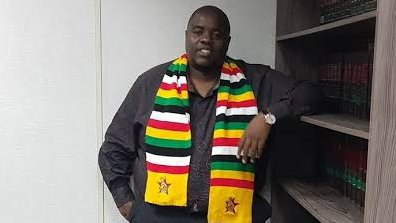
BY PROSPER TINGINI
In Part 1 of this story, we were told that the first English translation of the Bible from the Hebrew and Greek manuscripts was done by a man named William Tydnale. His translations were quickly labelled as “untrue translations”. He was accused of “willfully perverting the meaning of the scriptures, such that his New Testaments were ordered to be burned”. It is written that because of the gravity of deliberate manipulations done to the original contents on translation, Tyndale was condemned to death in 1536, and was subsequently “publicly executed and burned at the stake”. The religious leaders must have been mortified by the intentional misrepresentation of the original scripts, so gross that they equated this to blasphemy, whose sentence was death.
We also read how the next widely used version, the King James Version, which had tried to minimise some of Tyndale’s grotesque translations, was itself found to have “grave defects”. It is written that “these defects are so many and so serious as to call for a revision of the English translation”. What baffles the mind is why those tasked with those revisions were then instructed to keep their works as close as possible to both the condemned translation of Tyndale and the openly defective King James Version bibles? Could it be true that the main advanced reason was because of the fact that both these defective Bibles were the best seller books of their time and the religious leaders then sought to maintain commercial profit ahead of biblical truth? God knows.
Anyhow, let us continue reading the Bible’s telling of its own evolutionary story. Page four under the Preface section continues to read: “The problem of establishing the correct Hebrew and Aramaic text of the Old Testament is very different from the corresponding problem in the New Testament. For the New Testament we have a large number of Greek manuscripts, preserving many variant forms of the text. Some of them were made only two or three centuries later than the original composition of the books. For the Old Testament only late manuscripts survive, all (with the exception of the Dead Sea texts of Isaiah and Habakkuk and some fragments of other books) based on a standardised form of the text established many centuries after the books were written.
The present revision is based on the consonantal Hebrew and Aramaic texts as fixed early in the Christian era and revised by Jewish scholars (the “Masoretes”) of the sixth to ninth centuries. The vowels signs, which were added by the Masoretes, are accepted also in the main, but were a more probable and convincing reading, can be obtained by assuming different vowels; this has been done. No notes are given in such cases, because the vowel points are less ancient and reliable than the consonants.
Departures from the consonantal text of the best manuscripts have been made only where it seems clear that errors in copying had been made before the text was standardised. Most of the corrections adopted are based on the ancient version (translations into Greek, Aramaic, Syriac and Latin), which were made before the time of the Masoretic revision and therefore reflect earlier forms of the text. In every such instance a footnote specific the version or versions from which the correction has been derived, and also gives a translation of the Masoretic Text”.
Revised Standard Version continues with the Bible’s journey: “Sometimes it is evident that the text has suffered in transmission, but none of the versions provides a satisfactory restoration. Here we can only follow the best judgement of competent scholars as to the most probable reconstruction of the original text. Such corrections are indicated in the foot notes by the abbreviations Cn, and a translation of the Masoretic (Jewish Scholars) Text is added.
The discovery of the meaning of the text, once the best readings have been established, is aided by many new resources for understanding the original languages. Much progress has been made in the historical and comparative study of these languages. A vast quantity of writings in related Semitic languages, some of them only recently discovered, has greatly enlarged our knowledge of the vocabulary and grammar of Biblical Hebrew and Aramaic. Sometimes the present translation will be found to render a Hebrew word in a sense quite different from that of the traditional interpretation. It has not been felt necessary in such cases to attach a footnote, because no change in the text is involved and it may be assumed that the new rendering was not adopted without convincing evidence. The analysis of religious texts from the ancient Near East has made clearer the significance of ideas and practices recorded in the Old Testament. Many difficulties and obscurities, of course, remain. Where the choice between two meanings is particularly difficult or doubtful, we have given an alternative rendering in a foot note”.
- Chamisa under fire over US$120K donation
- Mavhunga puts DeMbare into Chibuku quarterfinals
- Pension funds bet on Cabora Bassa oilfields
- Councils defy govt fire tender directive
Keep Reading
Page 5 of the Preface section of our Bible goes on to read: “If in the judgement of the Committee the meaning of a passage is quite uncertain or obscure, either because of corruption in the text or because of the inadequacy of our present knowledge of the language, that fact is indicated by a note. It should not be assumed, however, that the Committee was entirely sure or unanimous concerning every rendering not so indicated. To record all minority views was obviously out of the question.
A major departure from the practice of the American Standard Version is the rendering of the Divine name, the “Tetragrammaton”. The American Standard Version used the term “Jehovah”; The King James Version had employed this in four places, but everywhere else, except in three cases where it was employed as part of a proper name, used the English word “Lord” (or in certain cases “God”) printed in capitals. The present revision returns to the procedure of the King James Version, which follows the precedent of the ancient Greek and Latin translators and the long established practice in the reading of the Hebrew Scriptures in the synagogue. While it is almost if not certain that the Name was originally pronounced “Yahweh”, this pronounciation was not indicated when the Masoretes added vowel signs to the consonantal Hebrew text. To the four consonants YHWH of the Name, which had come to be regarded as too scared to be pronounced, they attached vowel signs indicating that in its place should be read the Hebrew word “Adonia” meaning “Lord” or “Elohim” meaning “God”. The ancient Greek translators substituted the word “Kyrios”, meaning “Lord” for the Name. The Vulgate likewise used the Latin word “Dominus”. The form “Jehovah” is a late medieval origin; it is a combination of the consonants of the Divine Name and the vowels attached to it by the Masoretes but belonging to an entirely different word. The sound of Y is represented by J and the sound of W by V, as in Latin. For two reasons the Committee has returned to the more familiar usage of the King James Version, namely (1) the word “Jehovah” does not accurately represent any form of the Name ever used in Hebrew; and (2)-the use of any proper name for the one and only God, as though there were other gods from whom He had to be distinguished, was discontinued in Judaism before the Christian era and is entirely inappropriate for the universal faith of the Christian Church”.
- Prosper Tingini is the Scribe of the Children of God Missionary Assembly – God’s messengers. Contact details: Mobile & Whatsapp: 771 260 195. Email address: [email protected]










